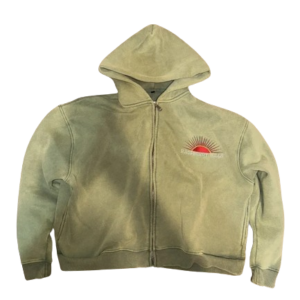
Image Sources: Hoarding Printing Company UK
In the demanding environments of factories and warehouses, selecting the right signage material is crucial for ensuring safety, efficiency, and durability. Dibond signs, composed of two thin aluminium sheets bonded to a solid polyethylene core, offer a robust solution tailored to meet these industrial needs.
Their lightweight yet sturdy construction makes Dibond particularly suitable for large-scale applications within industrial settings. The smooth surface of Dibond panels provides an excellent base for high-quality printing, ensuring that safety warnings, directional information, and branding are clearly visible and long-lasting.
What is a Dibond Sign?
A Dibond is crafted from Dibond, a high-quality aluminium composite material (ACM) consisting of two thin aluminium sheets enclosing a non-aluminium core. This structure combines the durability of aluminium with the lightweight nature of the core, resulting in a sign that is both sturdy and easy to handle. Dibond sign are renowned for their sleek appearance and resilience, making them ideal for various applications, including factory and warehouse settings.

What Are the Uses of Dibond?
Dibond is ideal for signage, displays, and cladding due to its durability, lightweight, and smooth finish.
- Exterior Signage: Its weather-resistant properties make it suitable for outdoor signs that maintain their appearance over time.
- Interior Displays: The smooth surface is perfect for high-quality prints, often used for promotional materials and directional signs inside facilities.
- Architectural Features: Dibond is employed in building facades and cladding due to its durability and aesthetic appeal.
- Point of Sale Displays: Retailers utilise Dibond for countertop displays and promotional stands, benefiting from its sturdiness and modern look.
What is the Difference Between Dibond and Aluminium?
While both Dibond and solid aluminium are used in signage, they differ significantly:
| Aspect | Dibond | Solid Aluminium |
| Composition | Aluminium composite material with two thin aluminium sheets enclosing a polyethylene core. | Homogeneous material made entirely of aluminium. |
| Weight | Lighter due to the composite structure. | Heavier, as it is solid metal. |
| Rigidity | Enhanced rigidity from the composite construction. | Less rigid; may require additional support for large applications. |
| Surface Finish | Smooth and uniform, ideal for high-quality printing. | May have surface imperfections; requires treatment for a smooth finish. |
| Weather Resistance | High resistance to weathering and corrosion. | Naturally resistant to corrosion but may oxidise over time. |
| Cost | Generally more cost-effective. | Typically more expensive due to material costs. |
Disclaimer: The information provided is based on general industry standards; specific product properties may vary by manufacturer.
What is Another Name for Dibond?
Dibond is a brand name for a specific type of aluminium composite material. Similar materials are known by various names, including:
- Aluminium Composite Panels (ACP): Flat panels consisting of two thin coil-coated aluminium sheets bonded to a non-aluminium core, often used for external cladding or facades of buildings, insulation, and signage.
- ACM Panels: Three-layer sandwich panels made of two pre-painted aluminium sheets bonded to a polyethylene core, offering good dimensional stability, low weight, and a sleek appearance for various applications.
Despite different names, these materials share common characteristics, such as durability, lightweight design, and suitability for diverse applications.
What Thickness is Dibond?
Dibond panels come in various thicknesses—2mm, 3mm, 4mm, and 6mm—to meet diverse application needs.
- 3mm: Ideal for indoor signage and displays, the 3mm Dibond panels offer a lightweight yet sturdy solution. Their smooth surface ensures high-quality print results, making them perfect for retail signage, exhibition graphics, and point-of-sale displays.
- 4mm: Suitable for both indoor and outdoor applications, 4mm Dibond panels provide enhanced durability and rigidity. They are commonly used for external signage, building site hoarding, and informational boards where increased strength is required to withstand environmental factors.
- 6mm: Best suited for large-scale outdoor signage and architectural cladding, 6mm Dibond panels deliver maximum strength and stability. Their robust construction makes them ideal for structural applications such as building facades, large advertising billboards, and public art installations.
Selecting the appropriate thickness depends on factors like application environment, structural requirements, and desired longevity.

What is a Building Site Hoarding?
A building site hoarding is a temporary, solid barrier erected around construction sites to ensure public safety by preventing unauthorised access and shielding passersby from potential hazards such as falling debris and construction activities.
- Ensure Safety: Erect sturdy hoarding to shield the public from construction hazards like debris and machinery.
- Provide Security: Install secure barriers to prevent unauthorised access and protect on-site materials and equipment.
- Enhance Aesthetics: Present an attractive facade that can display branding, project information, or public art, improving the site’s visual impact.
What is Hoarding for Building Sites?
Hoarding at building sites serves multiple purposes, including ensuring public safety by preventing unauthorised access and containing debris, enhancing site security to deter theft and vandalism, providing a platform for branding and advertising opportunities, and minimising environmental impact by controlling dust and noise pollution.
- Safety Compliance: Implement robust hoarding to meet legal standards, ensuring public protection from construction hazards.
- Advertising Opportunity: Acts as a large-format billboard, allowing companies to showcase branding, project details, or promotional content.
- Community Engagement: Provides information about the project’s progress, expected completion, and benefits to the local area.
What Are the Two Advantages of Hoarding on a Construction Site?
- Enhanced Brand Visibility: Hoarding offers a prime location for advertising, ensuring high visibility to both pedestrians and vehicular traffic.
- Public Safety and Perception: By clearly demarcating the construction area, hoarding protects the public and can be designed to present a positive image of the project, fostering community support.
Comparative Overview of Dibond Thickness Options
| Thickness | Common Uses | Advantages |
| 3mm | Indoor signs, small displays | Lightweight, cost-effective |
| 4mm | Indoor and outdoor signage | Balanced strength and weight |
| 6mm | Large signs, architectural features | High rigidity, suitable for demanding applications |
Disclaimer: Data sourced from Hoarding Printing Company.
Conclusion
Incorporating Dibond signs and building site hoarding into your factory or warehouse not only enhances safety and security but also elevates brand presence and community engagement. The combination of durability, versatility, and aesthetic appeal makes Dibond an excellent choice for industrial signage needs. For tailored solutions that align with your specific requirements, consider partnering with experts Hoarding Printing Company, who specialise in delivering high-quality hoarding and signage solutions.



